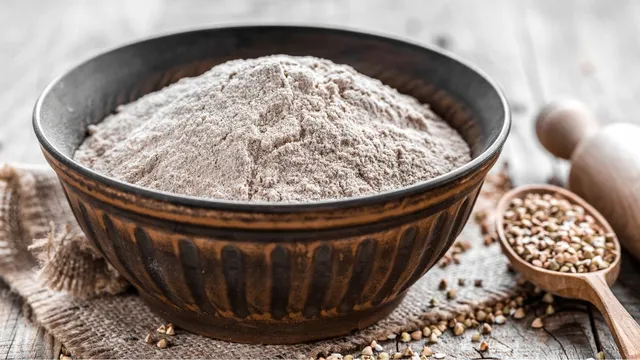- By Iram Hussain
- Mon, 07 Oct 2024 01:53 PM (IST)
- Source:JND
During Navratri, buckwheat flour famously called as kuttu ka atta plays a vital role in preparing traditional satvik dishes. Devotees whip up delicious dishes like kuttu ki Puri, kuttu ka Paratha and kuttu Pakora. However, amidst the festive fervour, ensuring flour purity is crucial. Adulterated buckwheat flour can lead to health issues, undermining the spiritual significance of fasting. To maintain purity and well-being, verify the flour's authenticity through simple tests and checks. Here are four simple ways to identify the adulterated buckwheat flour easily at home.
Ways To Check Adulterated Buckwheat Flour
Read Labels Properly
One of the easiest ways to check the purity of flour is to read labels. Ensure the ingredient list only mentions buckwheat flour with no added preservatives or fillers. While buying, check packaging dates, manufacturer details and nutritional information. A genuine label will ensure a healthy and pure Navratri fast.
DIY Method
Perform a simple DIY purity test for Kuttu Ka Atta at home. Mix one tablespoon of flour in a glass of water. Genuine buckwheat flour will dissolve while adulterated substances like wheat, rice or starch will float on the surface or settle at the bottom. This simple test will help to verify purity in minutes.
-1728288969341.jpg)
Easy ways to identify adulterated buckwheat flour (Image Credits: Canva)
Colour Test
You can also check its purity with its colour. Pure buckwheat flour boasts a distinctive brown colour. Its white or light shade will indicate adulteration with wheat or rice flour.
Through Kneading
You can also check the adulterated buckwheat flour while kneading as the impure flour tends to crumble or fall apart due to its low gluten content. Crumbly texture indicates purity while ensuring your Navratri dishes are authentic and healthy.
ALSO READ: How To Identify Adulterated Wheat Flour? Try These 4 Easy Tests
ALSO READ: Navratri 2024: 5 Easy Falhari Salads To Begin Your Day With

